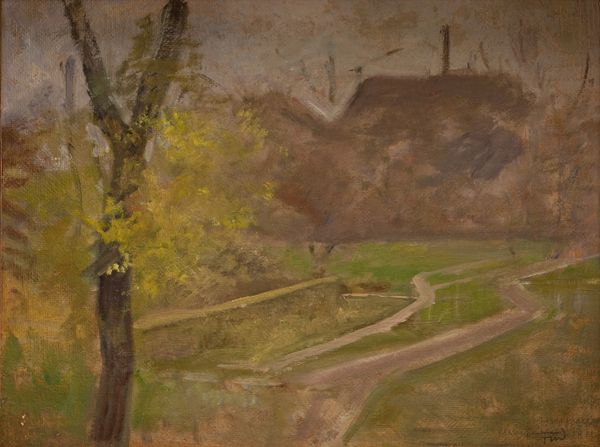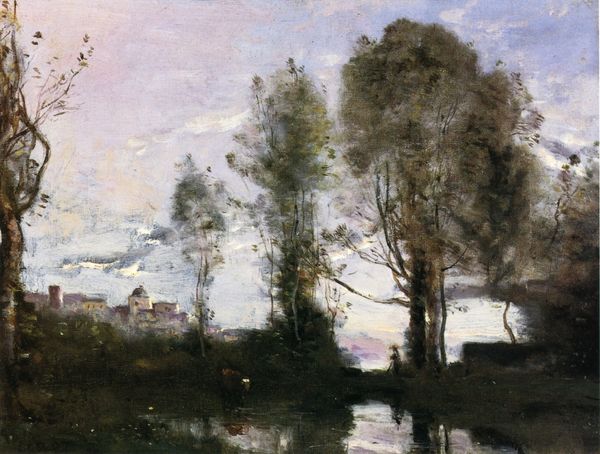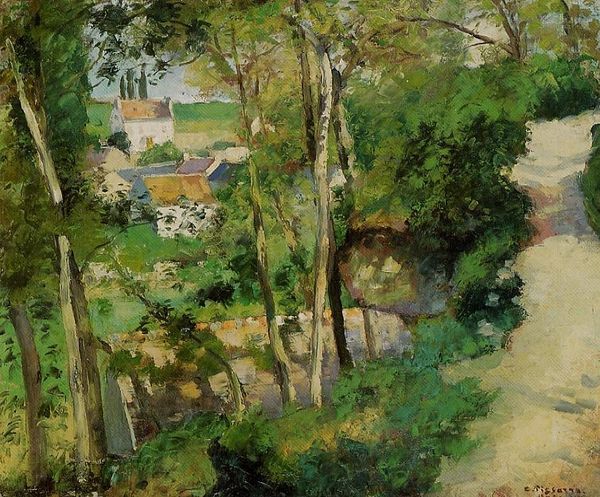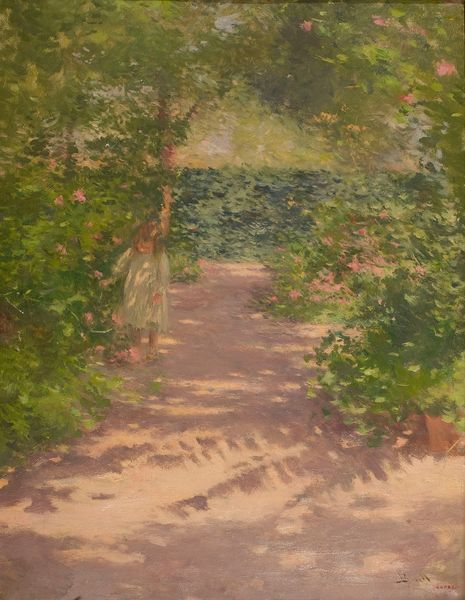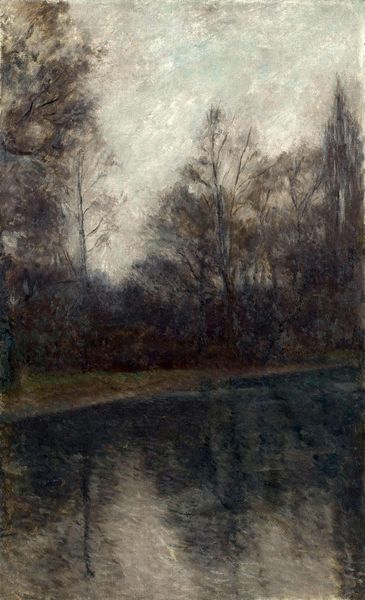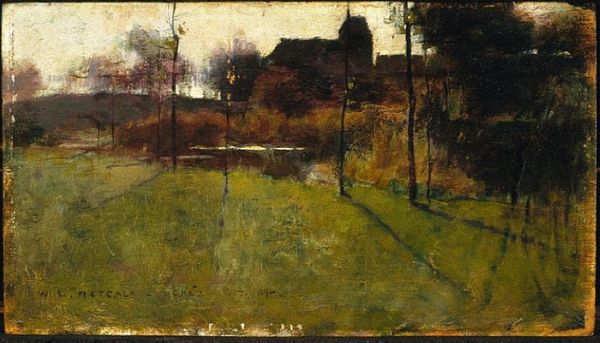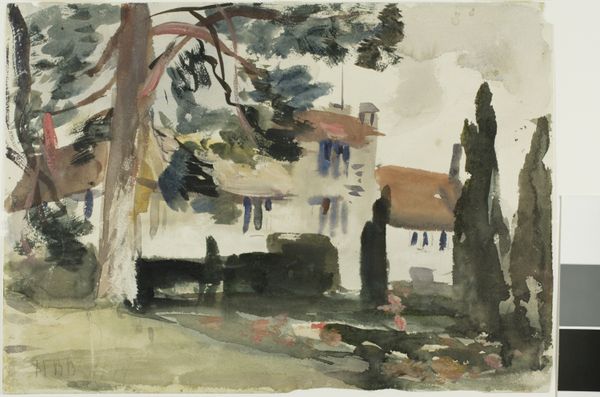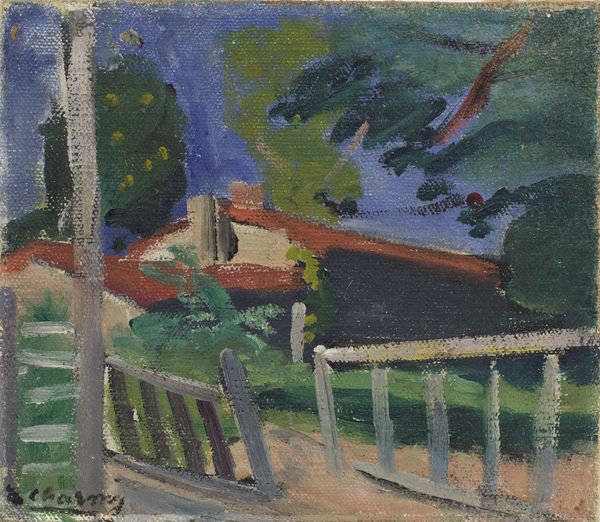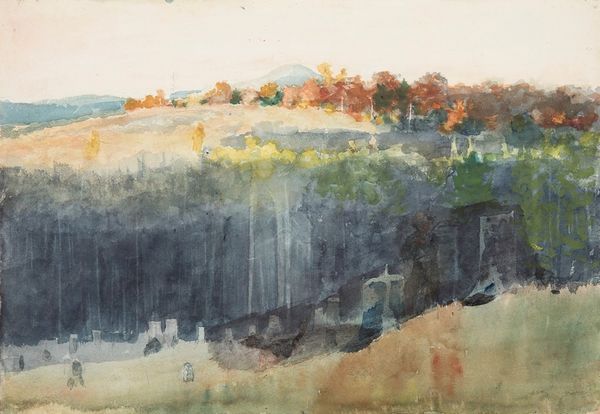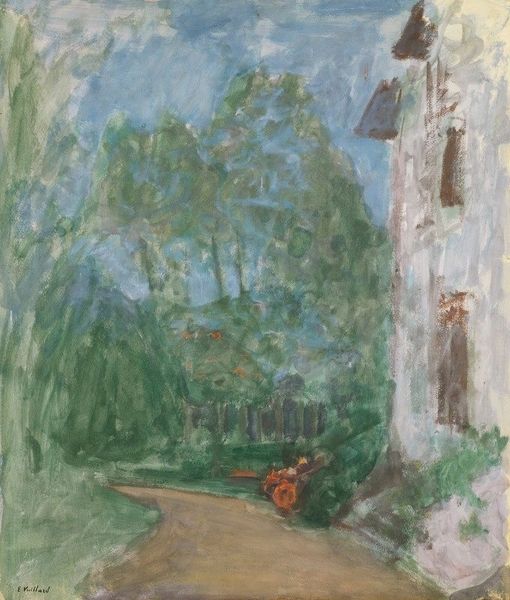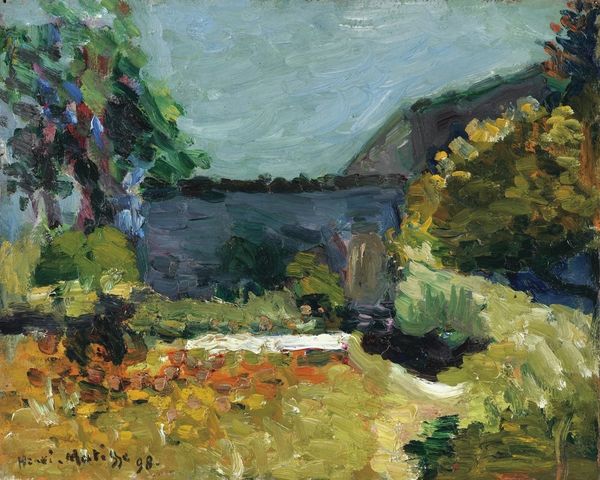
Copyright: Public domain
Curator: Looking at Lesser Ury’s "Houses by the River with a Woman Washing," dating from 1894, what strikes you first? Editor: It’s incredibly serene, almost melancholic. The subdued palette and blurred details create a dreamlike, introspective mood. The woman washing clothes—her posture, bowed in labor, resonates with a sense of enduring, quiet struggle. Curator: Ury captured fleeting moments. The composition really emphasizes the juxtaposition of nature and urbanization, something you see a lot in late 19th century artistic depictions of growing urban centers. What can you tell us about those dynamics playing out here? Editor: The river, typically a symbol of life and renewal, here seems almost stagnant, hemmed in by the buildings. It reflects the gray sky, a symbol maybe of a life devoid of joy. The woman becomes a lonely, grounding figure, caught in a turning tide of progress and change. Curator: Absolutely, and this portrayal echoes prevailing societal shifts—the burgeoning industrial landscape infringing upon traditional ways of life. Consider the simple act of washing clothes—it symbolizes a past slowly eroding under pressure from encroaching urban development. Editor: It’s poignant, yes, how Ury depicts her small, repetitive, very physical work as dwarfed by her setting. Almost like an older ritual or occupation being preserved, perhaps in vain. I can feel how daily routines become imbued with that significance of lost connection, nostalgia perhaps? Curator: Indeed, the soft, almost ethereal rendering contrasts starkly with the inherent harshness of labor, reinforcing a sense of yearning for simpler times—a potent symbol within the cultural memory. Perhaps a reflection of social classes and how they engage with urban changes? Editor: Maybe. What I do take away most powerfully is this delicate pastel resisting the complete encroachment. Even that pale color, perhaps like water itself, resists the incursion even as its role in our survival adapts with necessity. The enduring figure represents the struggle in a visual microcosm. Curator: Well, pondering that microcosm is a beautiful conclusion as we appreciate Ury's thoughtful layering of symbolism here. Editor: Yes, and a good reason why those familiar pastels still affect us profoundly now.
Comments
No comments
Be the first to comment and join the conversation on the ultimate creative platform.
